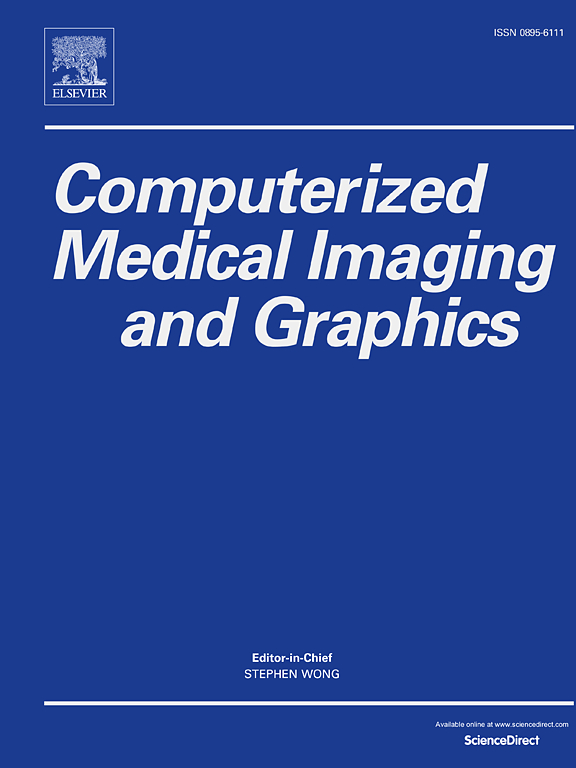A review of AutoML optimization techniques for medical image applications
IF 5.4
2区 医学
Q1 ENGINEERING, BIOMEDICAL
Computerized Medical Imaging and Graphics
Pub Date : 2024-10-16
DOI:10.1016/j.compmedimag.2024.102441
引用次数: 0
Abstract
Automatic analysis of medical images using machine learning techniques has gained significant importance over the years. A large number of approaches have been proposed for solving different medical image analysis tasks using machine learning and deep learning approaches. These approaches are quite effective thanks to their ability to analyze large volume of medical imaging data. Moreover, they can also identify patterns that may be difficult for human experts to detect. Manually designing and tuning the parameters of these algorithms is a challenging and time-consuming task. Furthermore, designing a generalized model that can handle different imaging modalities is difficult, as each modality has specific characteristics. To solve these problems and automate the whole pipeline of different medical image analysis tasks, numerous Automatic Machine Learning (AutoML) techniques have been proposed. These techniques include Hyper-parameter Optimization (HPO), Neural Architecture Search (NAS), and Automatic Data Augmentation (ADA). This study provides an overview of several AutoML-based approaches for different medical imaging tasks in terms of optimization search strategies. The usage of optimization techniques (evolutionary, gradient-based, Bayesian optimization, etc.) is of significant importance for these AutoML approaches. We comprehensively reviewed existing AutoML approaches, categorized them, and performed a detailed analysis of different proposed approaches. Furthermore, current challenges and possible future research directions are also discussed.

医学影像应用中的 AutoML 优化技术综述。
多年来,利用机器学习技术自动分析医学影像的重要性日益凸显。人们提出了大量使用机器学习和深度学习方法解决不同医学图像分析任务的方法。由于这些方法能够分析大量医学影像数据,因此相当有效。此外,它们还能识别人类专家难以发现的模式。手动设计和调整这些算法的参数是一项具有挑战性且耗时的任务。此外,设计一个能处理不同成像模式的通用模型也很困难,因为每种模式都有特定的特征。为了解决这些问题并使不同医学图像分析任务的整个流程自动化,人们提出了许多自动机器学习(AutoML)技术。这些技术包括超参数优化(HPO)、神经架构搜索(NAS)和自动数据增强(ADA)。本研究从优化搜索策略的角度概述了几种基于 AutoML 的方法,用于不同的医学成像任务。优化技术(进化、梯度、贝叶斯优化等)的使用对这些 AutoML 方法至关重要。我们全面回顾了现有的 AutoML 方法,对其进行了分类,并对不同的建议方法进行了详细分析。此外,我们还讨论了当前面临的挑战和未来可能的研究方向。
本文章由计算机程序翻译,如有差异,请以英文原文为准。
求助全文
约1分钟内获得全文
求助全文
来源期刊
CiteScore
10.70
自引率
3.50%
发文量
71
审稿时长
26 days
期刊介绍:
The purpose of the journal Computerized Medical Imaging and Graphics is to act as a source for the exchange of research results concerning algorithmic advances, development, and application of digital imaging in disease detection, diagnosis, intervention, prevention, precision medicine, and population health. Included in the journal will be articles on novel computerized imaging or visualization techniques, including artificial intelligence and machine learning, augmented reality for surgical planning and guidance, big biomedical data visualization, computer-aided diagnosis, computerized-robotic surgery, image-guided therapy, imaging scanning and reconstruction, mobile and tele-imaging, radiomics, and imaging integration and modeling with other information relevant to digital health. The types of biomedical imaging include: magnetic resonance, computed tomography, ultrasound, nuclear medicine, X-ray, microwave, optical and multi-photon microscopy, video and sensory imaging, and the convergence of biomedical images with other non-imaging datasets.

 求助内容:
求助内容: 应助结果提醒方式:
应助结果提醒方式:


